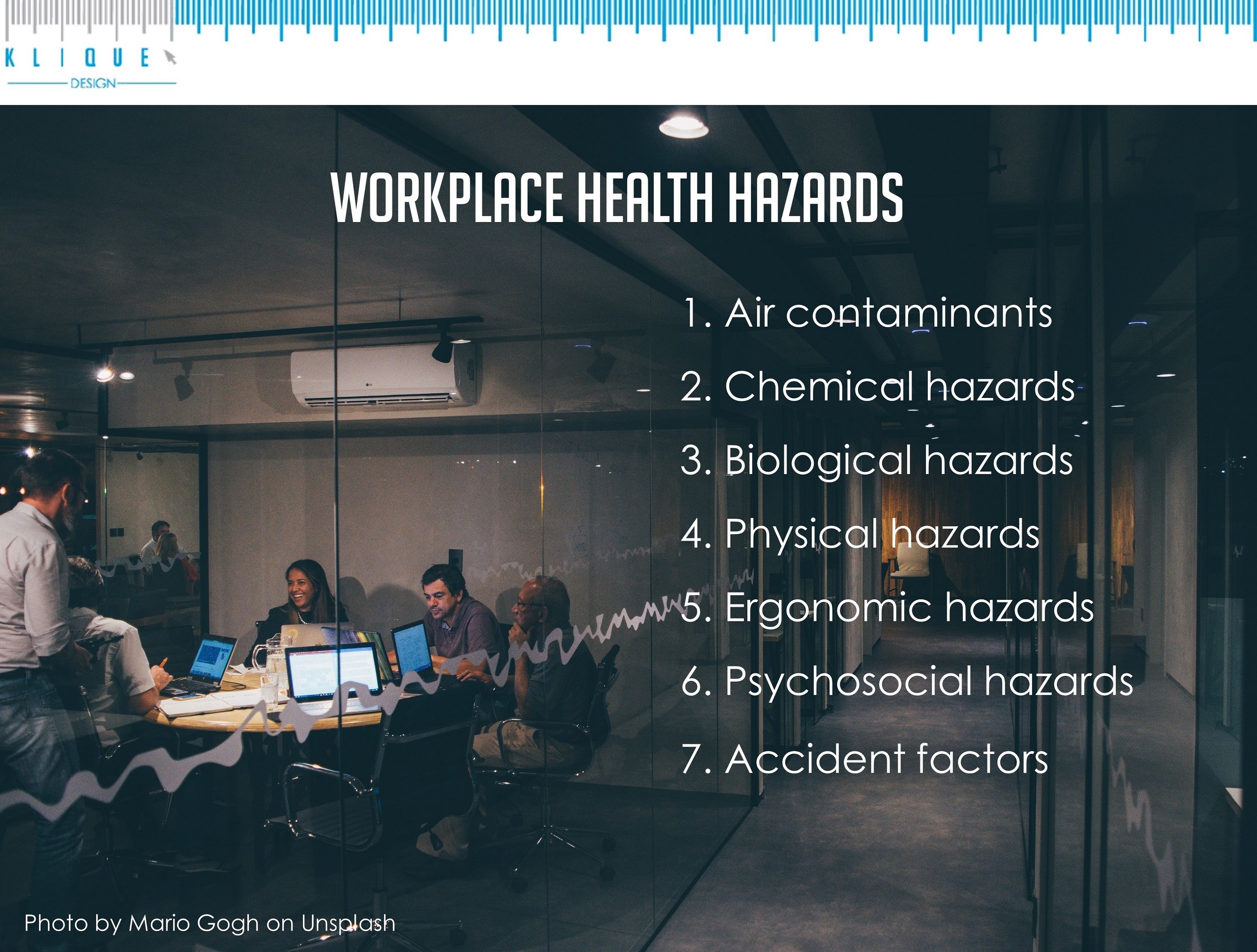
We are surrounded by many different types of health hazard all the time, either knowingly or unknowingly. To better care for our workers and ourselves, education about what constitutes a health hazard thus becomes essential. As we all know, there is a causal relationship between a cozy, comfortable and safe working environment and a healthy workforce with better morale. Employers can achieve higher productivity or minimize productivity loss by creating a workplace/office that maximize their employees’performance, reduce absenteeism and presenteeism.
Although not all workplace or office can be designed equally the same, we shall nonetheless do our best to avoid any possible hazard that poses a threat to our workforce.
So, what is workplace health hazards? Let’s go through one by one.
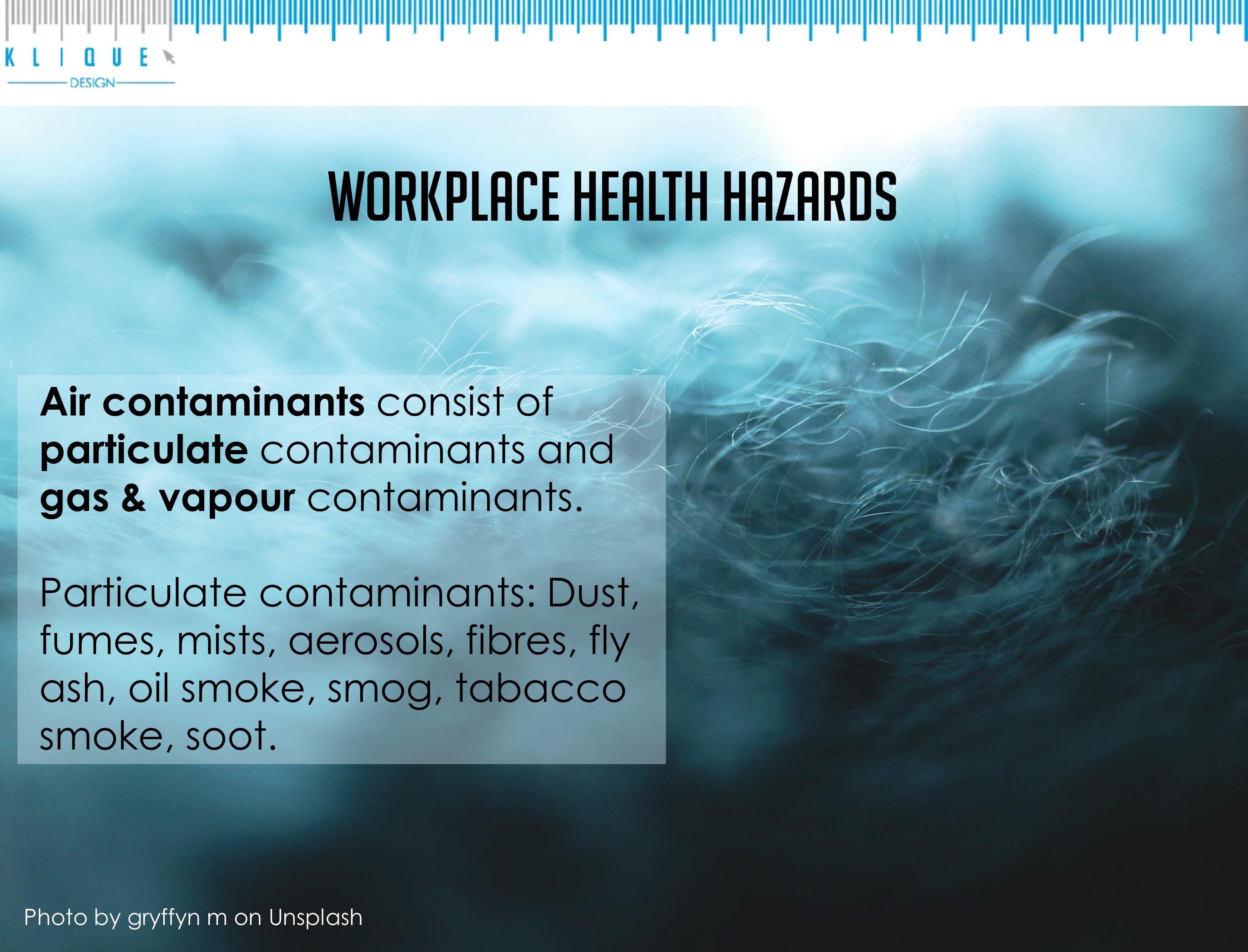
Air contaminants
Air contaminants consist of particulate contaminants and gas & vapour contaminants. Particulate contaminants can be dust, fumes, mists, aerosols, fibres, fly ash, oil smoke, smog, tabacco smoke, soot.
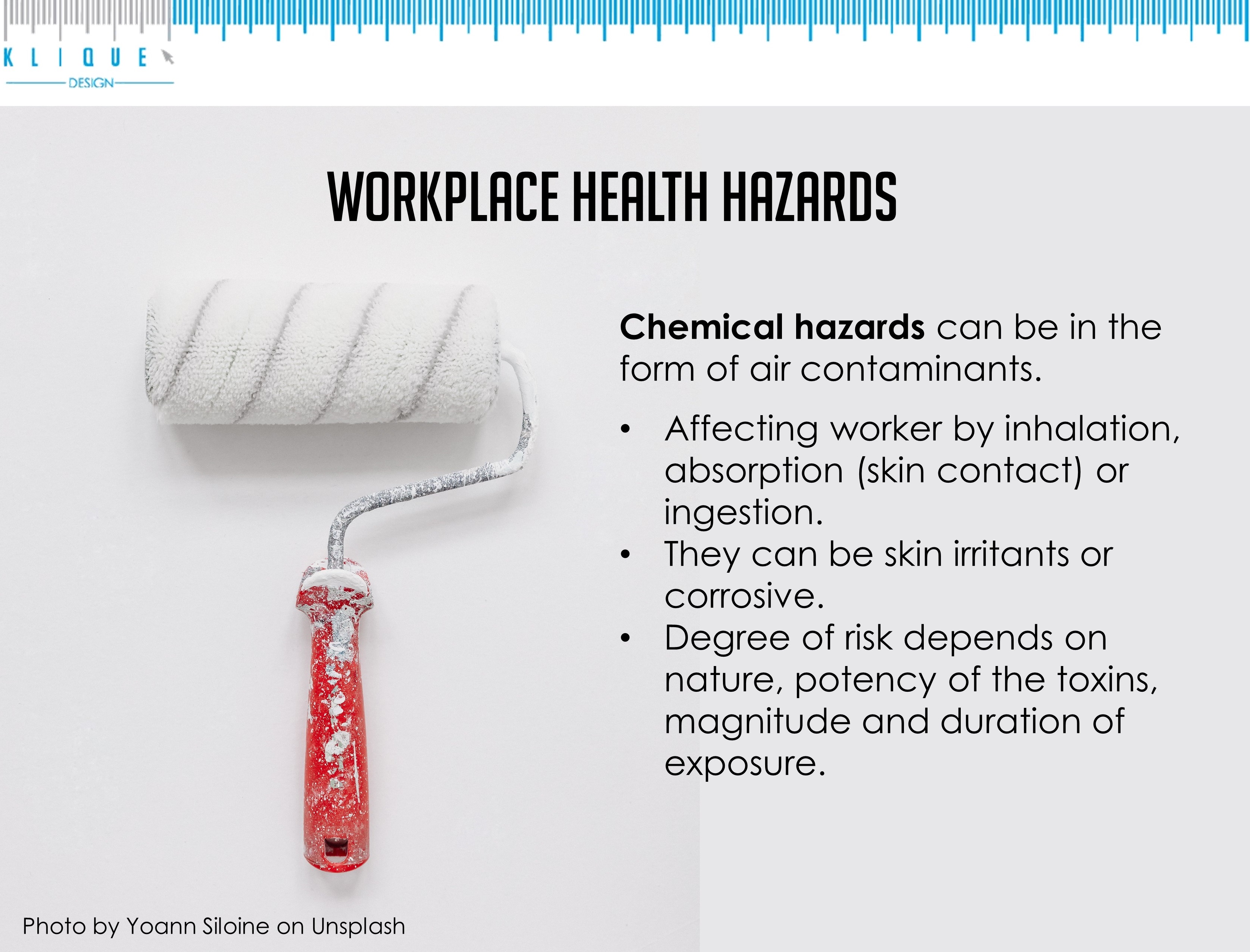
Chemical hazards
Chemical hazards can be in the form of air contaminants. It can affect worker by inhalation, absorption (skin contact) or ingestion. They can be skin irritants or corrosive. Degree of risk depends on nature, potency of the toxins, magnitude and duration of exposure.
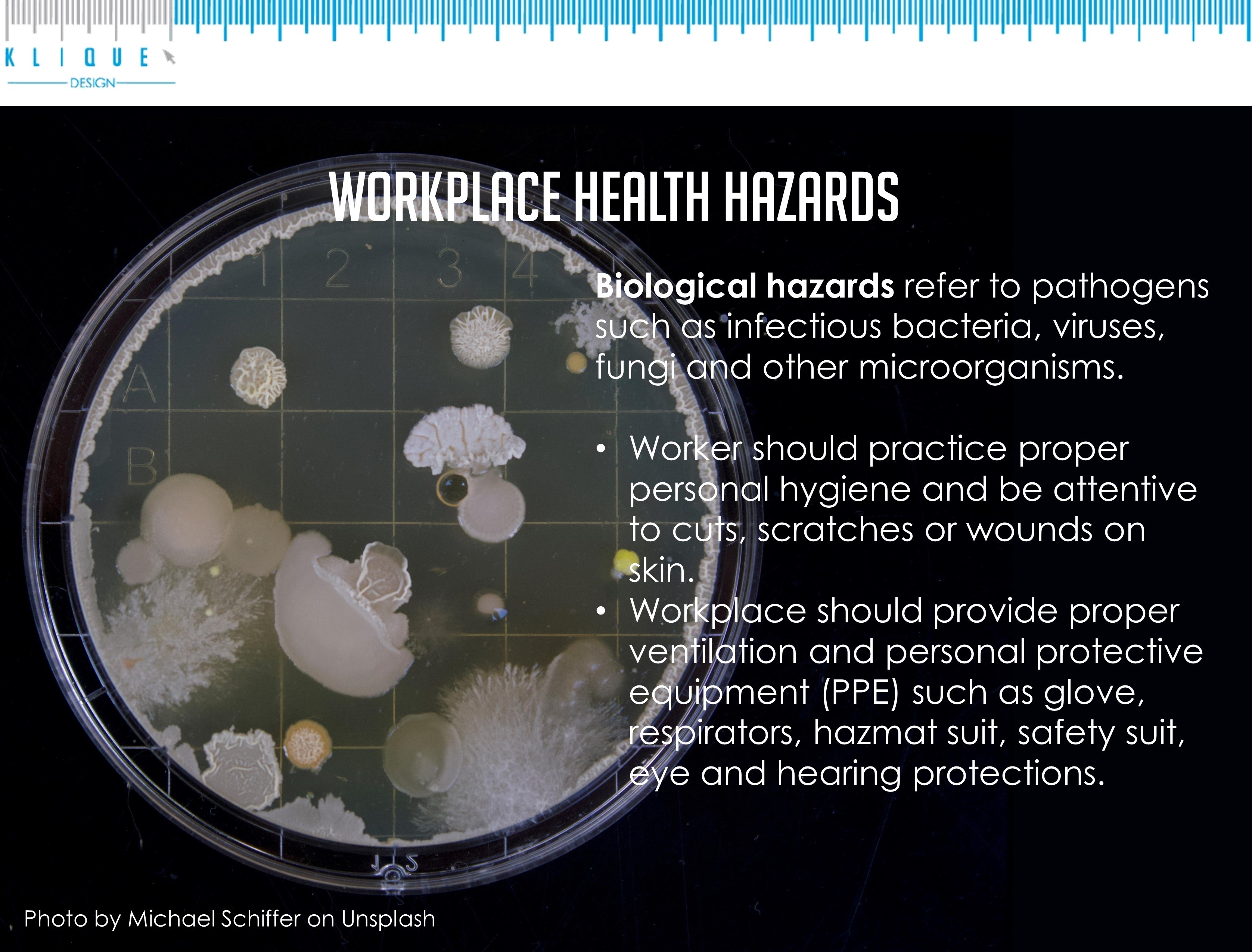
Biological hazards
Biological hazards refer to pathogens such as infectious bacteria, viruses, fungi and other microorganisms. Worker should practice proper personal hygiene and be attentive to cuts, scratches or wounds on skin. Workplace should provide proper ventilation and personal protective equipment (PPE) such as glove, respirators, hazmat suit, safety suit, eye and hearing protections.
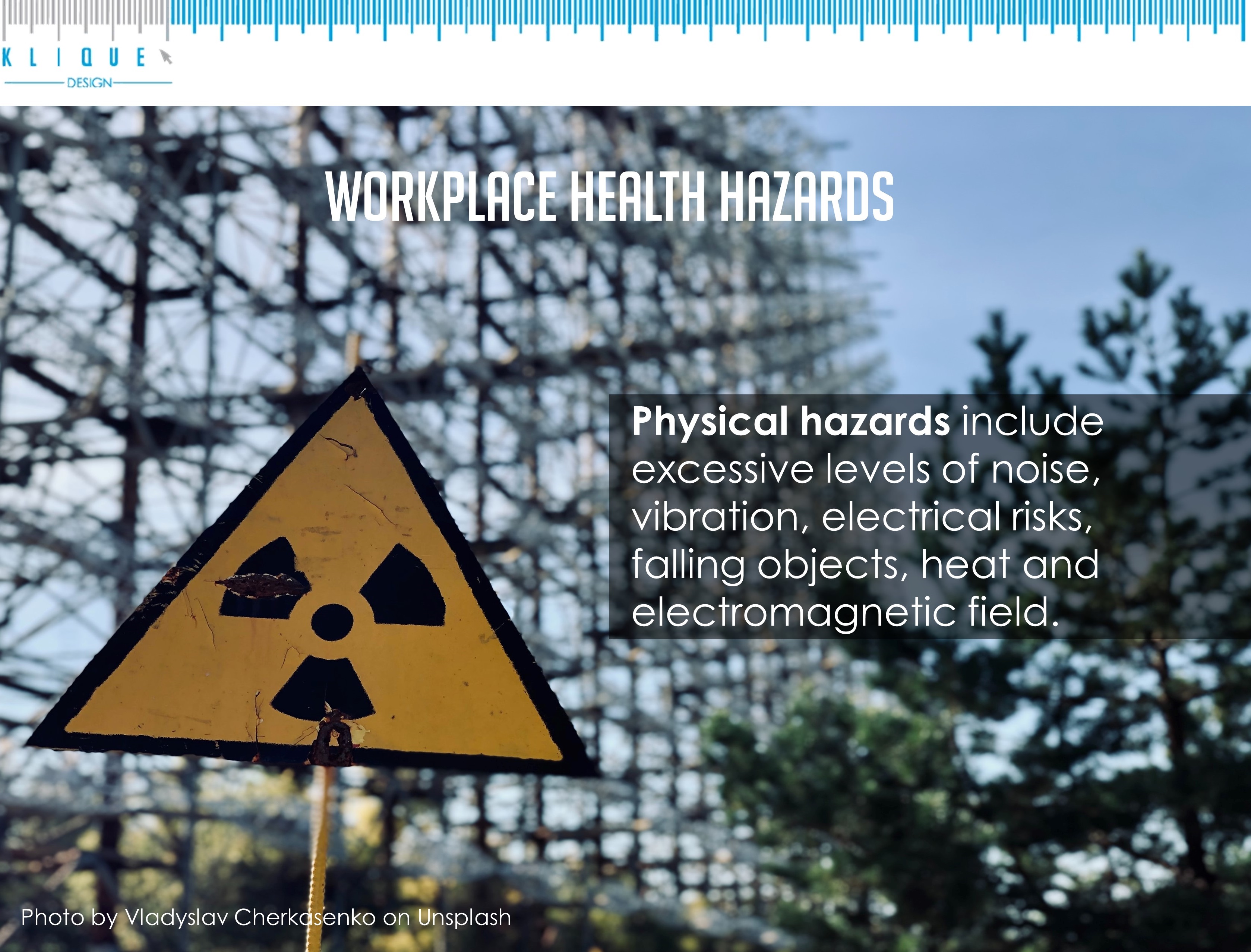
Physical hazards
Physical hazards include excessive levels of noise, vibration, electrical risks, falling objects, heat and electromagnetic field. Adequate and appropriate PPE must be provided.
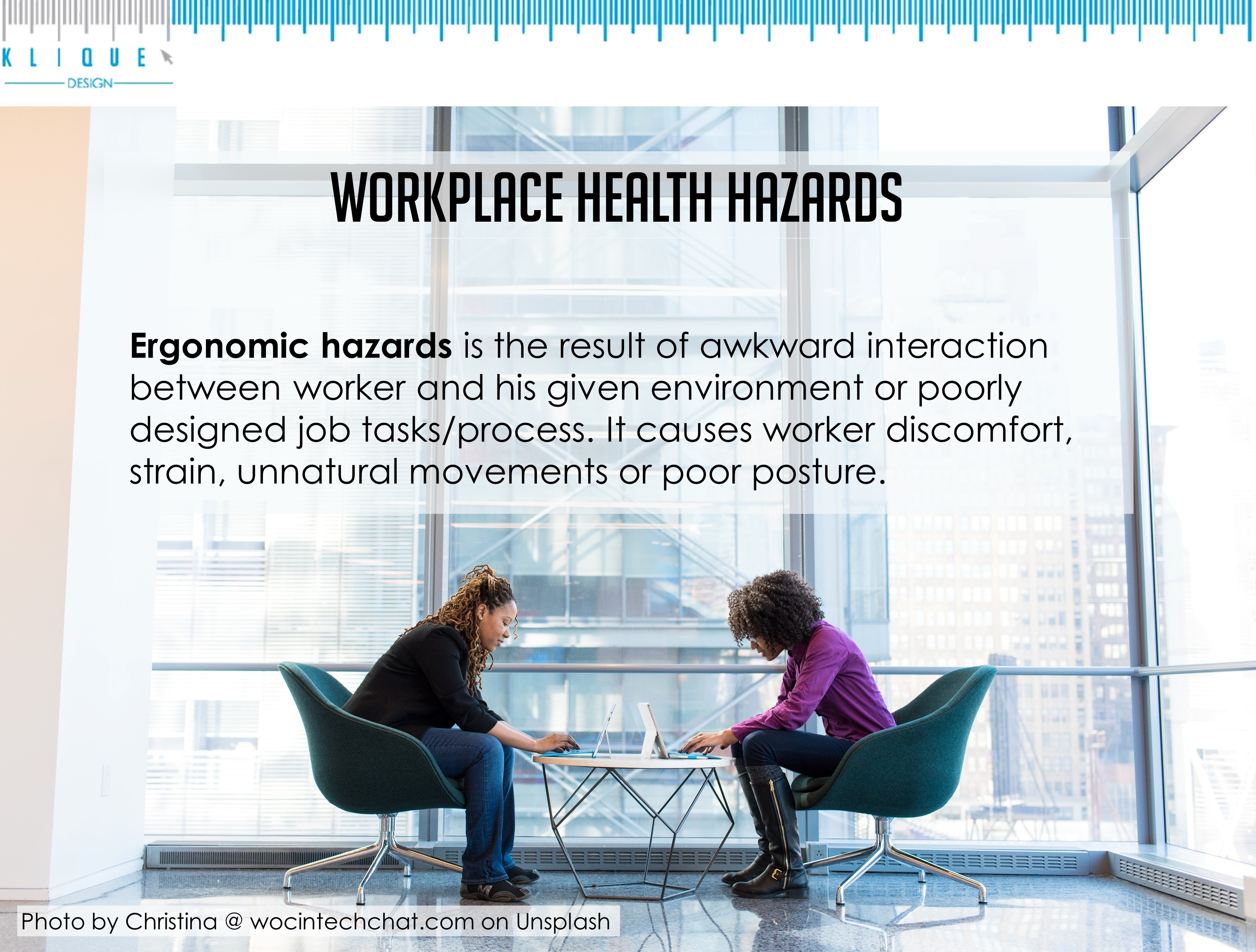
Ergonomic hazards
Ergonomic hazards is the result of awkward interaction between worker and his given environment or poorly designed job tasks/process. It causes worker discomfort, strain, unnatural movements or poor posture.
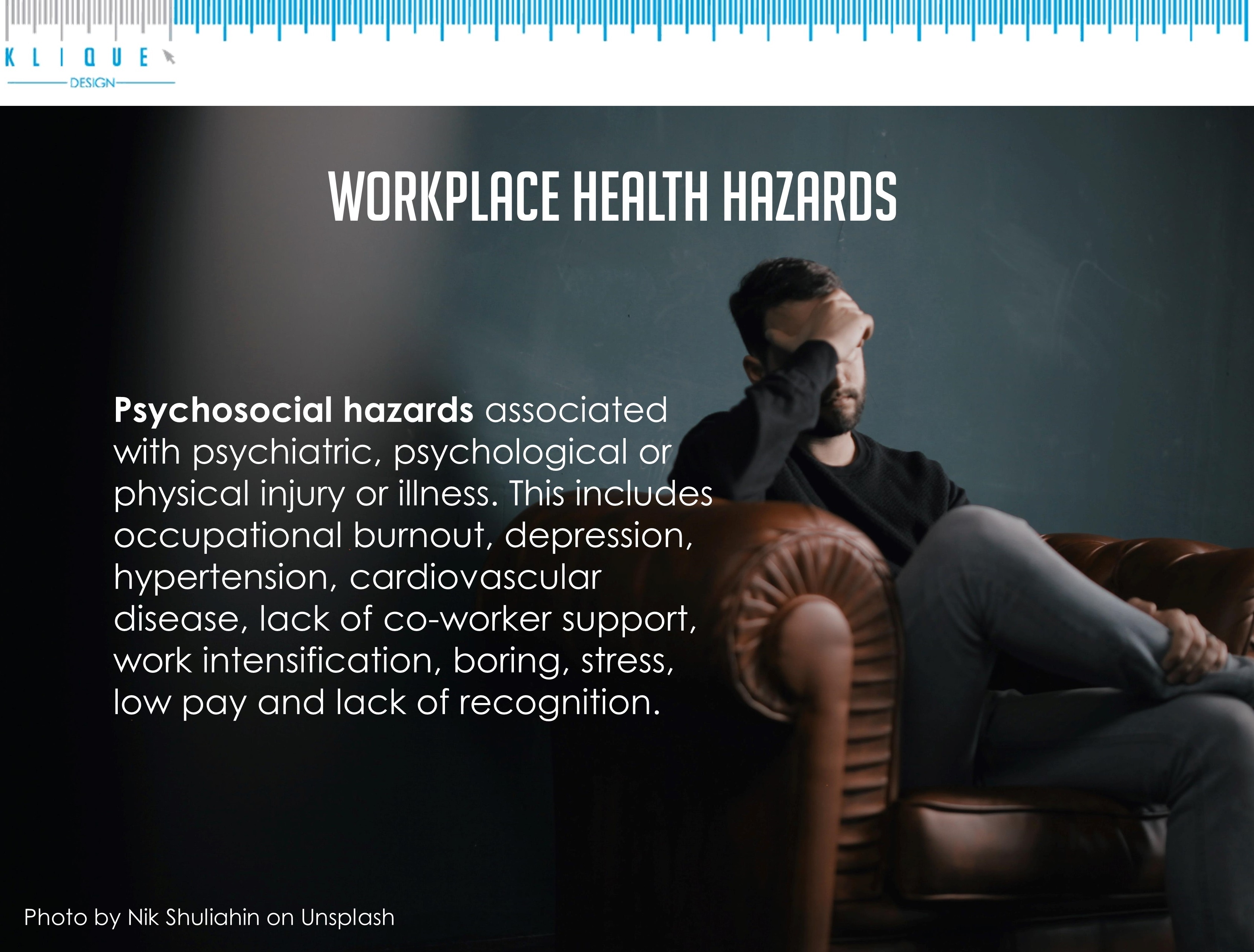
Psychosocial hazards
Psychosocial hazards associated with psychiatric, psychological or physical injury or illness. This includes occupational burnout, depression, hypertension, cardiovascular disease, lack of co-worker support, work intensification, boring, stress, low pay and lack of recognition.
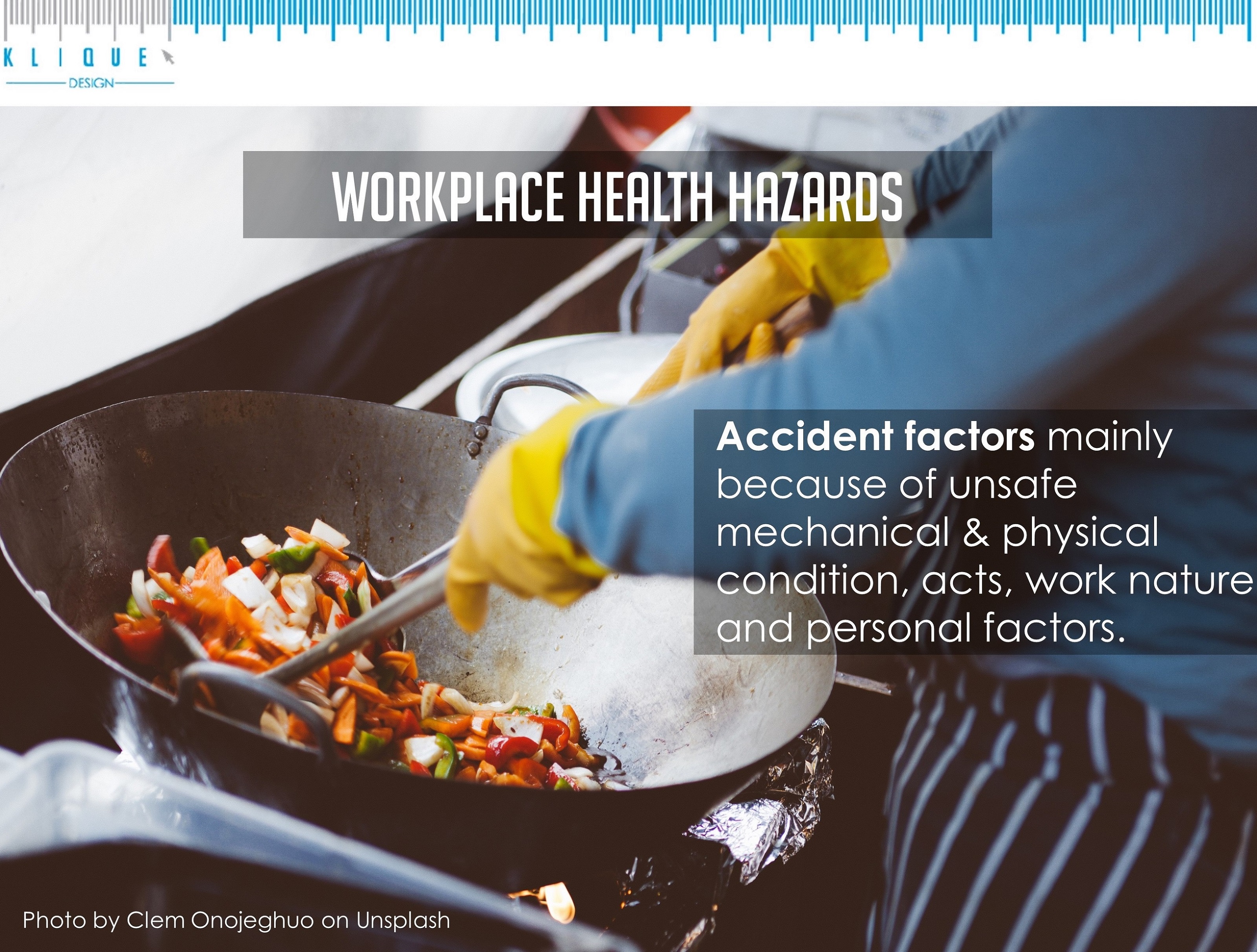
Accident factors
Accident factors mainly because of unsafe mechanical & physical condition, acts, work nature and personal factors.
